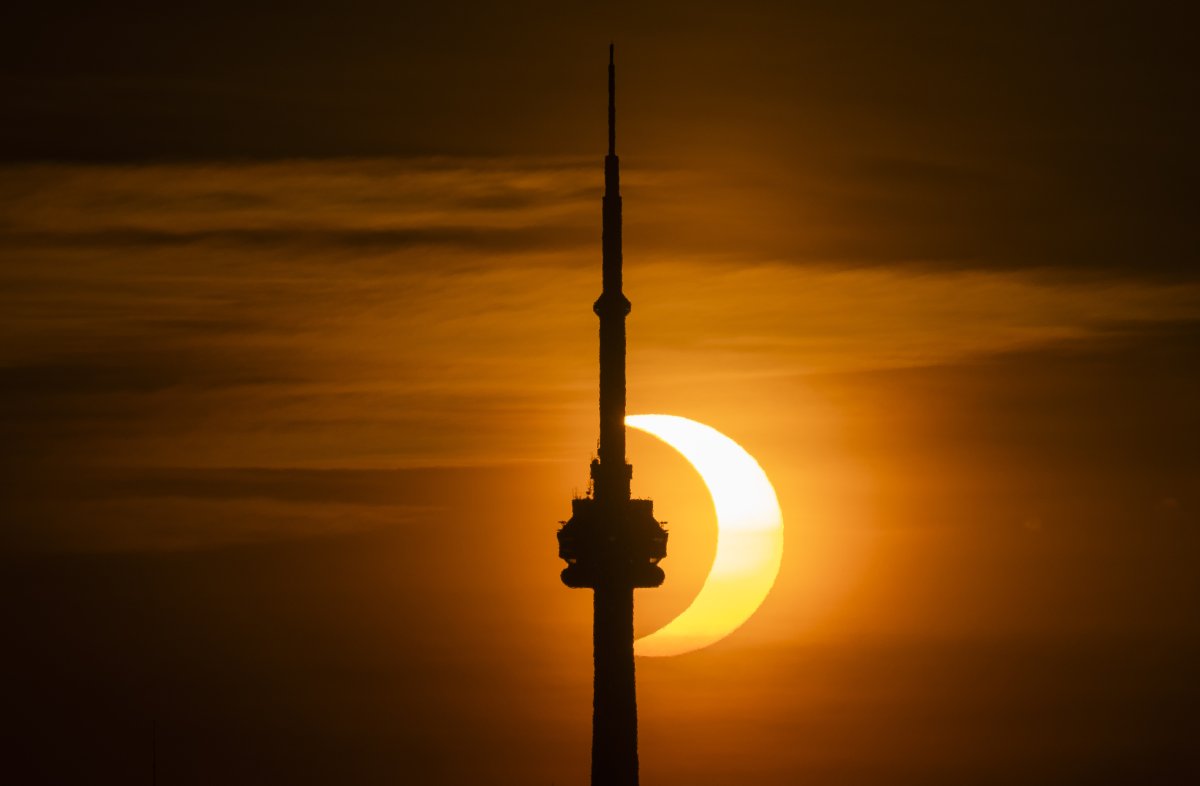Several mesmerizing videos capturing Thursday's "ring of fire" solar eclipse have been shared on social media, including one from the Royal Astronomical Society of Canada shared by Storyful on YouTube.
A solar eclipse occurs when the moon passes between the sun and our planet, creating a shadow on Earth.
The full eclipse demonstrating a "ring of fire" could be seen in some parts of Canada, as well as Greenland and northern Russia.
The latest footage, captured by Luc Boulard at the Royal Astronomical Society of Canada's Sudbury Centre, showed a partial eclipse, with a glowing crescent-shaped sun burning brightly as it appears to grow larger against a pitch-black sky.
A partial eclipse occurs "when the sun, moon, and Earth are not exactly lined up. The sun will appear to have a dark shadow on only part of its surface," NASA says.
In North America, viewers in much of Canada, the eastern portion of the U.S. and northern Alaska were able to see a partial eclipse on Thursday.
A partial eclipse was also visible in parts of the Caribbean, Europe, Asia and northern Africa.
NASA explains: "During an annular eclipse, the moon is far enough away from Earth that the moon appears smaller than the sun in the sky.
"Since the moon does not block the entire view of the sun, it will look like a dark disk on top of a larger, bright disk. This creates what looks like a ring of fire around the moon," it adds.
A solar eclipse can be viewed from somewhere on Earth around every 18 months. There will be 224 solar eclipses in the 21st century, including six total eclipses in the 2020s.
The next annular eclipse will take place October 14, 2023. It will be visible from parts of the western regions of the U.S. as well as Central America, Colombia and Brazil.
An annular eclipse is different from a total solar eclipse, during which the moon totally blocks the sun out of view from Earth.
NASA explains: " A total solar eclipse is visible from a small area on Earth. The people who see the total eclipse are in the center of the Moon's shadow when it hits Earth.
"The sky becomes very dark, as if it were night. For a total eclipse to occur, the Sun, Moon and Earth must be in a direct line," it adds.
The next total solar eclipse will be visible from Antarctica and the Southern Ocean on December 4 this year. It will be followed by another one visible from East Timor, Indonesia and Australia on April 20, 2023.
Spectators in the U.S., Mexico and Canada will have to wait until 2024 to be able to see the next total eclipse.

Uncommon Knowledge
Newsweek is committed to challenging conventional wisdom and finding connections in the search for common ground.
Newsweek is committed to challenging conventional wisdom and finding connections in the search for common ground.
About the writer
Soo Kim is a Newsweek reporter based in London, U.K. She covers various lifestyle stories, specializing in travel and health.
Soo ... Read more
To read how Newsweek uses AI as a newsroom tool, Click here.








